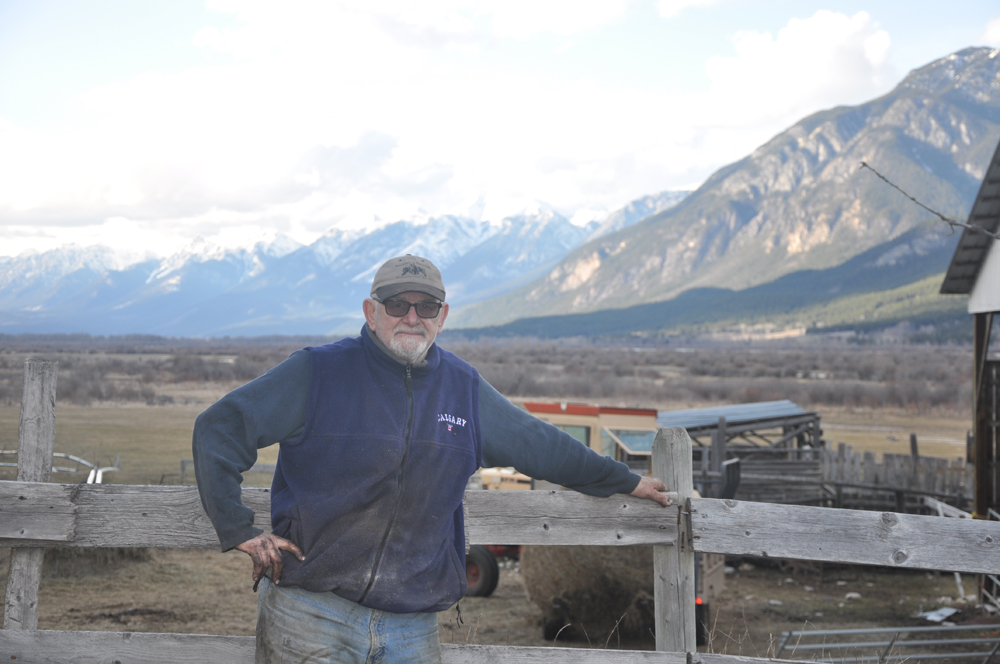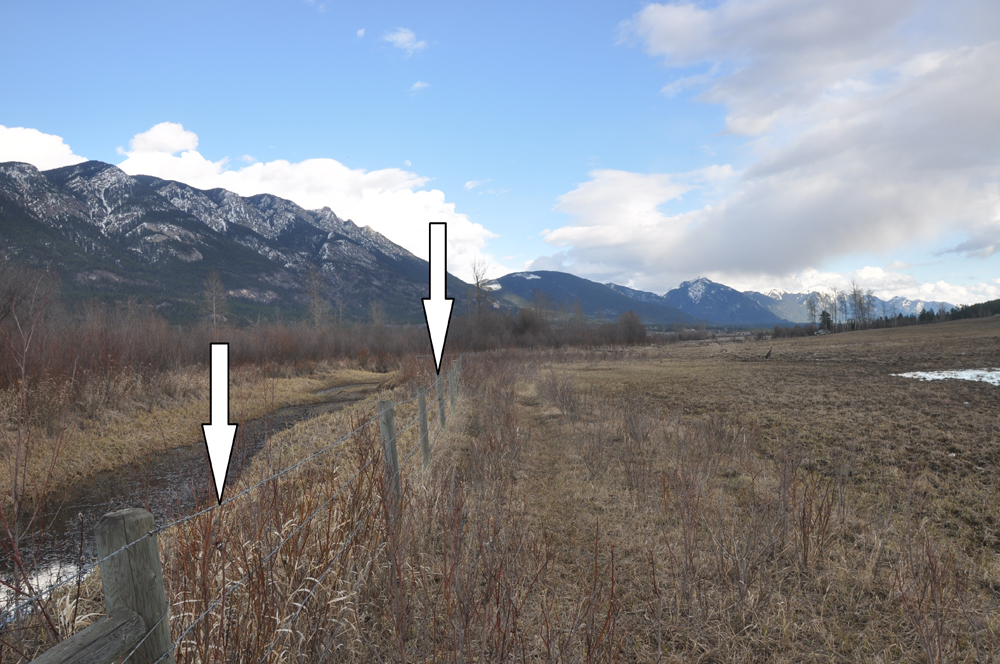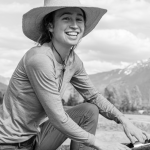Ask an Expert: Farmland Advantage

Making Positive Change to Farmland Biodiversity in BC
Susan Smith, Alison Speirs, and Dave Zehnder
Farmland Advantage is a research and development project that works with farmers to conserve and enhance critical natural values in British Columbia. These natural values are often referred to as ecosystem services, which are services of a natural environment that benefit society as a whole. Examples are wetlands that filter and purify water and forests that clean the air and provide habitat for wildlife. The Farmland Advantage model works with the BC Environmental Farm Plan Program to help farmers identify the natural values on the farm that can be protected and enhanced. It then helps farmers implement best management practices (BMPs) and contracts the farmer to preserve them. These practices can include actions such as water or stream setbacks, strategic fencing, reforestation, or rangeland enhancement. In this model, funding is provided to the farmer to help put BMPs in place and to maintain them over the long term.
A global example of the economic benefits of this approach can be seen by looking to New York City. In 1997, this type of program saved the city 7 billion dollars. Instead of installing a costly water filtration plant, area farmers were contracted to amend management practices such as fertilizer regimes and livestock grazing to protect streams. Field management practices to reduce soil erosion were also implemented. Another example is in Costa Rica where, in the 1950’s, 80% of the forest cover was intact. By 1985, with the forest cover down to 20%, the trend was reversed by providing incentives for Costa Ricans to plant and maintain trees. As a result, forest cover in Costa Rica has rebounded to about 60%.
The Farmland Advantage team includes coordinator Dave Zehnder, who has the background in ecology and agriculture to develop these farmland projects. Other team members include an accountant to keep everyone whipped into shape, and rangeland manager, Don Gayton, who is one of the first scientists to get involved in the project. Michelle Molnar, lead economist with the David Suzuki Foundation, is also part of this diverse team of individuals tasked with developing and delivering the Farmland Advantage Project. Key partners include the BC Environmental Farm Plan Program (EFP) and associated EFP Advisors.
The Farmland Advantage Project and the EFP Program work synergistically in that EFP Advisors assist producers to develop an EFP and provide a range of planning services that can then allow access to incentives that enable producers to implement BMPs. After implementation, Farmland Advantage develops necessary contractual arrangements to assist with the cost of maintaining the projects and their ongoing assessments. Being able to access both programs through the EFP Advisor that visits the farm and helps them through the process makes it easy for the farmer to get it all set up.
Currently, Farmland Advantage is a five year research and development project that is working towards a long-term program. It involves partners and agencies working together to develop a solid, replicable program model capable of being administered independently and sustainably, and able to show tangible successes. Working groups made up of farmers, technical experts, and funders act in an advisory capacity to develop the project at the regional scale.

The Rock-A-Boo Ranch is one of the first Farmland Advantage projects in the Kootenay region of British Columbia. Rock-a-Boo Ranch is located in Brisco, half an hour north of Invermere, and has been farmed by John Palmer and his family for over 100 years.
In addition to cattle, the farm also has sheep, ducks, goats, and chickens, as well as two guard donkeys. This project was borne out of a need to protect the unique Lower Bugaboo Falls, the largest low elevation cedar grove/rainforest ecosystem in the East Kootenay, and one of only six overall. Historically, these were salmon spawning grounds and a location of meeting for Indigenous peoples. John recognized the need to protect this site from having his animals use it for grazing and watering.
In addition to this ecologically and culturally significant site, John also fenced off an area of forest, building alternate shelter so that the trees would not be destroyed from over-grazing and bark rubbing. Finally, as part of the project, he fenced his cattle from the Crown Lands of the Columbia wetlands. This saved him time in animal management, reduced mortality risk, and also aided in preservation of the sensitive wetlands. John worked with his local EFP Advisor to develop the plan and build the fence. He is now receiving an annual payment to maintain the area.
The Farmland Advantage Project has been rolled out in phases. Phase 1 included a literature review and small scale trial of the concept to create an initial model. Phase 2 developed the model further by establishing sites across the province. Working with economists and agriculture and wildlife experts along the way, the goal was to look at different types of agriculture in different regions to see if there are differences in results. This research and development phase of the project is being carried out using a continuous improvement approach as they learn new and better ways of delivering the program and working with different partners.
Phase 3 is about developing the project into a long-term program. This phase involves the establishment of demonstration and test sites in three regions of the province: Kootenays, Okanagan, and Lower Mainland. In year one of this five year project, Farmland Advantage was able to sign on 60 farmers and establish 60 demonstration sites. In that time, over 740 acres of prime riparian habitat, including over 30 km of shoreline, was conserved and enhanced. The project is now working to establish funders that will grow and sustain the program over the long term.
A key aspect of the Farmland Advantage Project is ongoing monitoring to measure the benefits. The Alberta Biodiversity Monitoring Institute (ABMI) provided the monitoring method that tries to answer the basic question, “What positive changes can be measured when BMPs are implemented and maintained?” According to the ABMI, the science is sound on the benefits of BMPs that protect riparian zones, allowing development of a “rapid” assessment for measuring the results. This method, known as a riparian health assessment, is being used by Farmland Advantage to measure indicators of riparian health and the results of the projects.
For example, invasive (noxious) weeds can to be a problem in riparian areas. This tool scores the area in terms of presence of weeds. Over time, it is possible to use this established weed score to measure the change or improvement of a riparian area once BMPs have been implemented.
Among the many examples of the local benefits to biodiversity, an important one is bird populations that rely on protection of riparian zones. Riparian zones are extremely valuable for providing food, nesting sites, and refuge for an abundance of wild birds in British Columbia. An example is the Lewis’s Woodpecker, listed as a Species At Risk, and observed visiting one of the project sites located in the Kootenays. Bird Studies Canada is one of the partners helping Farmland Advantage to develop monitoring methodology specifically for birds using the sites.
An important goal of the Farmland Advantage Project is to ensure the farmer is not losing money by participating in the program. Key to this is a cost-benefit analysis, currently underway, that includes the cost of creating and maintaining the BMPs. This analysis will guide payment levels and ensure the program doesn’t become another unpaid job for the farmer.
There is a long list of partners involved with Farmland Advantage including universities, BC Agriculture Council, Investment Agriculture Foundation of BC, farming and wildlife agencies, private foundations, conservation funds, local governments, Government of Canada, and the Government of BC.
For more information, visit the Farmland Advantage website or contact Dave Zehnder by phone: 250-342-0325, or email: dave@farmlandadvantage.com
Susan Smith is an Industry Specialist for Field Vegetables and Organics, and Alison Speirs is an Environmental Agrologist with the BC Ministry of Agriculture. Dave Zehnder, based in Invermere, is the Project Lead for the Farmland Advantage Project.




